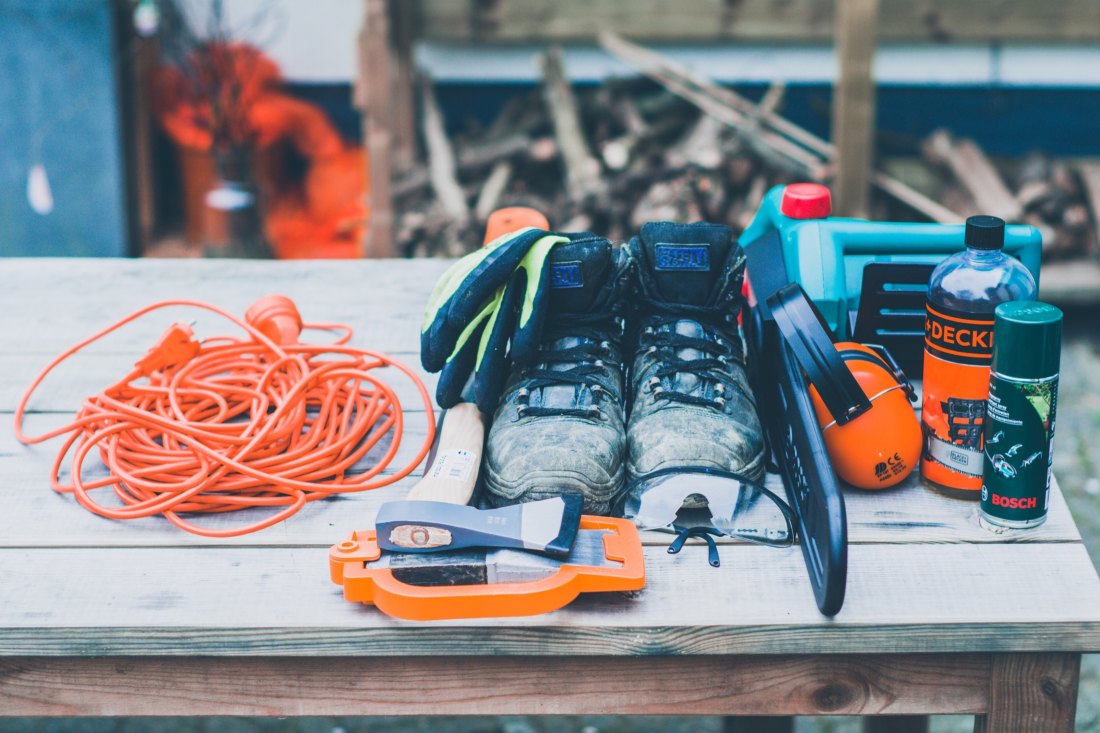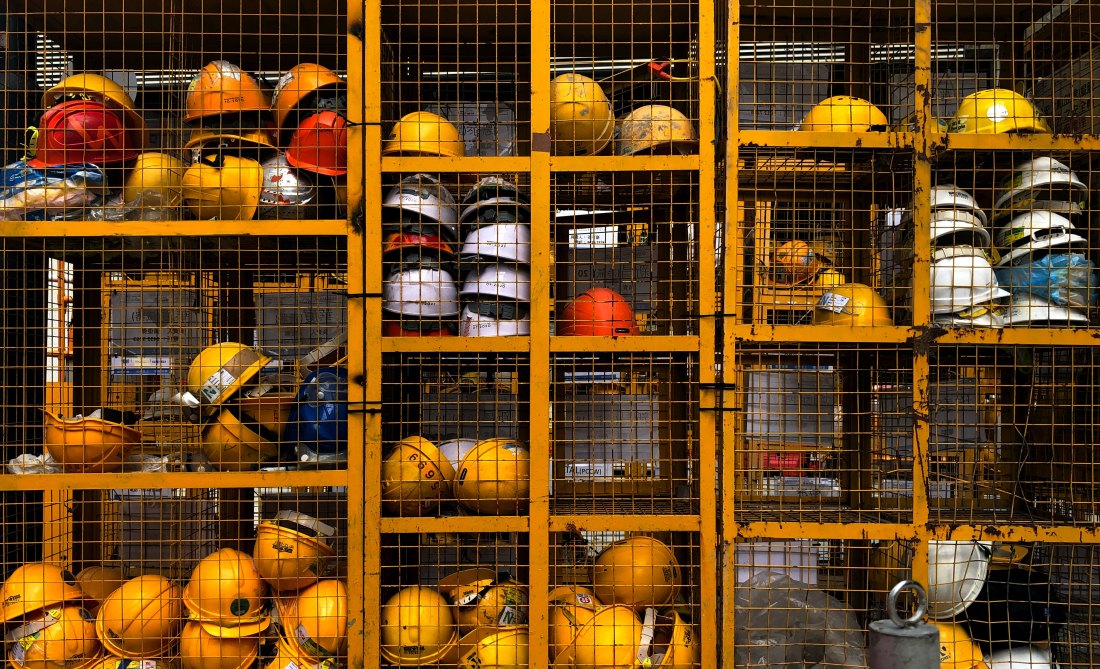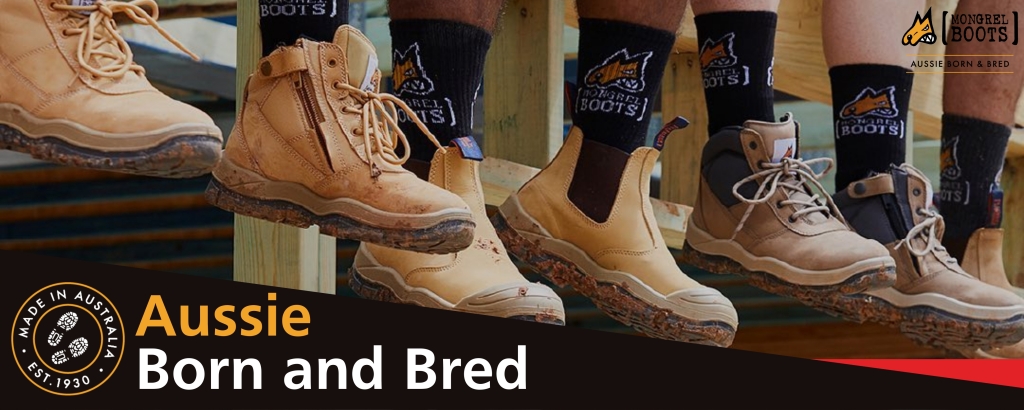
In the demanding world of Australian workplaces, safety boots stand as crucial protectors against potential hazards. As we delve into this comprehensive guide, it’s essential to understand that the right safety boots not only safeguard your feet but enhance overall workplace safety.

Statistics on workplace injuries related to footwear underline the necessity of investing in high-quality safety boots. Now, let’s embark on a journey to explore the intricacies of safety boots, focusing on materials, construction, and benefits that make them indispensable in various industries.

Understanding Australian Workwear Standards
Australia boasts stringent workwear standards, and safety boots are no exception. A standout certification in this realm is the ASTM (American Society for Testing and Materials). Recognizing and understanding these standards is pivotal in choosing safety boots that meet the specific needs of your work environment.
Types of Safety Boots
In the ever-evolving realm of workwear, safety boots emerge as adaptable sentinels, ready to tackle a myriad of occupational challenges. This section unveils the nuances of various safety boots crafted to address specific needs across industries. From the robust protection offered by steel-toe boots to the versatile resilience of Waterproof Safety Boots and the thermal comfort of Insulated Work Boots, each type serves as a tailored solution for distinct work environments. Delve into the intricacies of these safety boot variations, exploring the materials, features, and benefits that render them indispensable assets in the pursuit of workplace safety and overall well-being.

Steel Toe Boots
Steel toe boots are the stalwart defenders of your feet, providing unmatched protection in hazardous conditions.
Materials Used:
- Steel Toe Caps: Constructed with durable steel, these caps offer maximum impact resistance.
- Leather Uppers: These uppers provide a dual advantage of protection and durability.
Description:
The steel toe caps act as a shield, effectively guarding your toes from heavy objects. Paired with leather uppers, these boots ensure longevity and offer a professional appearance.
Thickness:
Standard steel toe caps are around 2-3 mm thick, striking a balance between robust protection and comfort.

Waterproof Safety Boots
Navigating through wet and challenging environments requires specialized boots equipped with advanced waterproofing features.
Materials Used:
- Waterproof Membrane: Typically crafted from materials like Gore-Tex, this membrane ensures impervious protection.
- Sealed Seams: These seams prevent water infiltration, providing an additional layer of defence.
Description:
The waterproof membrane and sealed seams work in tandem to keep your feet dry, even in the most demanding conditions. The thinness of the membrane, around 0.1-0.2 mm, adds minimal bulk to the boots.

Insulated Work Boots
Facing extreme temperatures demands insulation that not only keeps you warm but also wicks away moisture.
Materials Used:
- Thinsulate or PrimaLoft Insulation: These synthetic materials excel in trapping and retaining heat.
- Insulated Lining: Often crafted from moisture-wicking fabric, this lining keeps feet dry.
Description:
The insulation materials create a thermal barrier, providing warmth in harsh conditions. Simultaneously, the moisture-wicking lining ensures your feet remain dry and comfortable. The thickness of insulation layers varies, generally ranging from 3-5 mm.

Summer Work Shoes
In warmer climates, lightweight and breathable options are paramount to prevent overheating.
Materials Used:
- Mesh Uppers: Lightweight and breathable, promoting air circulation.
- EVA Midsoles: These midsoles provide cushioning without adding excessive weight.
Description:
Mesh uppers facilitate optimal air circulation, preventing overheating during warm weather. EVA midsoles offer comfort without compromising on weight, with mesh thickness minimal at around 1 mm.

Choosing the Right Safety Boots for Your Industry
Choosing the right safety boots involves considering the specific requirements of your industry. Here are guidelines to help you make an informed decision:
- Identify Workplace Hazards: Assess the potential hazards in your workplace, such as heavy objects, electrical risks, or slippery surfaces.
- Understand ASTM Standards: Familiarize yourself with ASTM-certified safety boots relevant to your industry to ensure the selected safety boots meet the necessary safety criteria.
- Toe Protection: Different industries may require specific toe protection. Steel toe caps are suitable for impact protection, while composite or alloy toes may be preferred in environments with electrical hazards.
- Slip Resistance: Evaluate the slip resistance of the boots, particularly if your workplace involves wet or oily surfaces. Look for boots with slip-resistant outsoles.
- Waterproofing: In environments prone to wet conditions, opt for waterproof safety boots with features like sealed seams and waterproof membranes.
- Temperature Considerations: For extreme temperatures, choose boots with appropriate insulation or cooling features, depending on the climate of your work environment.
- Comfort and Fit: Prioritise comfort and fit to ensure that the safety boots can be worn for extended periods without causing discomfort or fatigue.
- Ankle Support: In industries where ankle injuries are common, select boots with adequate ankle support to reduce the risk of sprains.
- Chemical Resistance: If your work involves exposure to chemicals, choose safety boots with chemical-resistant features to protect against spills and splashes.
- Compliance with Industry Regulations: Ensure that the chosen safety boots comply with industry-specific regulations and standards.

Popular Brands in Australia
When it comes to safety boots, several reputable brands are popular among Australian workers. Hip Pocket Workwear and Safety offers a diverse range of quality footwear brands, including:
- Blundstone: Known for its durability and comfort, Blundstone safety boots are a favourite among workers in various industries.
- Oliver Footwear: Renowned for its innovative designs and adherence to safety standards, Oliver Footwear provides reliable options for different work environments.
- Mongrel Boots: Combining style with functionality, Mongrel Boots offers a wide range of safety boots suitable for diverse work settings.
- Redback Boots: Recognized for their slip-resistant outsoles and robust construction, Redback Boots are a popular choice, especially in industries where traction is crucial.
- Steel Blue: With a focus on comfort and safety, Steel Blue safety boots are widely trusted by workers across Australia.

Features of High-Quality Waterproof Safety Boots
High-quality waterproof safety boots should offer superior protection and comfort. Here are the essential features to look for:
- Waterproof Membrane: A reliable waterproof membrane, such as Gore-Tex, ensures complete protection against water infiltration.
- Sealed Seams: Boots with sealed seams enhance water resistance, preventing leaks in challenging conditions.
- Breathability: Despite being waterproof, the boots should allow for adequate breathability to prevent overheating and discomfort.
- Moisture-Wicking Lining: An inner lining that wicks away moisture keeps your feet dry and comfortable, especially during extended wear.
- Durable Upper Materials: The upper materials, whether leather or synthetic, should be durable and capable of withstanding wet conditions without compromising integrity.
- Slip-Resistant Outsoles: In wet environments, slip-resistant outsoles are essential for maintaining stability and preventing accidents.
- Insulation Options: Some waterproof safety boots come with insulation options, providing warmth in colder environments.
- Easy Cleaning: Consider boots with materials that are easy to clean, ensuring that they maintain their waterproof properties over time.

Caring for Your Safety Boots
Unlock the secrets to maintaining the longevity of your safety boots with expert maintenance tips, cleaning hacks, and proper storage recommendations. Discover how proper care ensures your safety boots stay effective and reliable for an extended lifespan.

Specialized Safety Boots for Every Workplace
Embark on a journey through a spectrum of safety boots meticulously designed to cater to the unique demands of different work environments, offering an impeccable fusion of comfort and protection:

Summer Work Shoes: Comfort and Safety for Warmer Climates
As the mercury rises, it’s crucial to equip yourself with safety footwear that ensures comfort without compromising on protection. Explore the features that make Summer Work Shoes an ideal choice:
- Lightweight and Breathable Materials: The incorporation of mesh uppers, often made of lightweight synthetic materials, allows for optimal air circulation, preventing overheating even in the warmest conditions.
- Cushioning Without Added Weight: The presence of EVA (ethylene-vinyl acetate) midsoles provides essential cushioning without compromising the lightweight design. This ensures fatigue-free movement during prolonged use in hotter climates.

Description:
- Mesh uppers promote air circulation, preventing overheating.
- EVA midsoles offer lightweight cushioning for extended comfort.
Thickness:
- Mesh thickness is minimal, around 1 mm.
Insulated Work Boots for Extreme Conditions
When the temperatures plummet, and harsh conditions prevail, insulated work boots become indispensable. Dive into the features that make them the go-to choice for extreme environments:
- Synthetic Insulation Materials: Thinsulate or PrimaLoft insulation, crafted from synthetic fibres, takes centre stage, creating a formidable thermal barrier that keeps your feet warm and comfortable in the harshest of cold climates.
- Moisture-Wicking Lining: The inclusion of moisture-wicking lining, often made of advanced fabric blends, ensures not only warmth but also dryness. This feature becomes pivotal in preventing discomfort caused by sweating or external moisture.

Description:
- Thinsulate or PrimaLoft insulation traps and retains heat for warmth.
- Moisture-wicking lining keeps feet dry.
Thickness:
- Insulation layers vary, generally ranging from 3-5 mm.

Importance of Steel Toe Boots in the Workwear Industry
In the realm of workwear, steel-toe boots have carved a niche for themselves as stalwart protectors. Understand why they hold such paramount importance in ensuring workplace safety:
- Durable Steel Toe Caps: The foundation of these boots lies in the robustness of their steel toe caps, made of durable steel, offering maximum impact resistance. This critical feature safeguards your toes against heavy objects and potential workplace hazards.
- Long-lasting Leather Uppers: The use of leather uppers, often sourced from high-quality hides, goes beyond aesthetics; it ensures longevity and a professional appearance. These uppers not only withstand the rigours of various work environments but also add a touch of durability to your overall workwear ensemble.
Description:
- Steel toe caps made of durable steel offer maximum impact resistance.
- Leather uppers provide longevity and a professional appearance.
Thickness:
- Standard steel toe caps are around 2-3 mm thick.
Discover how each of these safety boots caters to specific workplace needs, ensuring optimal safety and comfort in various conditions. Whether you’re navigating scorching summers, facing extreme cold, or dealing with heavy-duty tasks, the right safety boots stand ready to be your trusted companion in the world of work.

Importance of ASTM Certification
ASTM certifications play a crucial role in ensuring the quality and safety standards of safety boots. Different ASTM certifications cater to specific safety aspects. Here are some key ASTM certifications:
- ASTM F2412-18 and F2413-18: These standards cover the performance requirements for protective toe cap footwear, ensuring protection against impact and compression.
- ASTM F1677-19: This standard measures the slip resistance of footwear on various surfaces, crucial for preventing slips and falls in the workplace.
- ASTM F2412-18 and F2413-18 (EH): Electrical Hazard (EH) certification ensures that safety boots provide protection against electrical shocks.
- ASTM F2892-18: This standard covers non-metallic puncture-resistant footwear, protecting against puncture hazards in the sole.
- ASTM F2413-18 (MT): Metatarsal (MT) protection ensures that the safety boots guard against impact and compression hazards to the metatarsal area.
Understanding these ASTM certifications helps you make an informed choice, ensuring that your safety boots meet the specific safety requirements of your workplace.

Link Between Safety Boots and Workplace Safety
Grasp the tangible link between safety boots and workplace safety with statistics showcasing reduced accidents. Understand the critical role safety boots play in preventing injuries, and discover how they contribute to a safer work environment.

Safety Boots for Women and Kids
Discover the variety of safety boot options catering to women and children. Addressing specific needs in diverse work environments ensures that every member of the workforce, regardless of age or gender, has access to suitable and protective footwear.

Conclusion
In the ever-evolving landscape of workwear, the significance of safety boots transcends mere protective gear; it become a testament to a commitment to workplace well-being. As we conclude this comprehensive guide, it’s imperative to underscore the pivotal role these specialized safety boots play in ensuring your safety, comfort, and productivity across diverse work environments.
By delving into the intricate details of safety boots tailored for different conditions, we’ve unveiled a world where materials, design, and functionality harmonize to create footwear that is not only reliable but also a testament to innovation. Whether you’re navigating the scorching heat in Summer Work Shoes, braving the extreme cold in Insulated Work Boots, or countering heavy-duty tasks with the robustness of steel-toe boots, each pair becomes an essential ally in your daily work routine.
Remember that the thickness, materials, and colours of these safety boots are not just aesthetic features but critical components designed to meet the stringent demands of your workplace. The lightweight breathability of Summer Work Shoes, the insulating prowess of Insulated Work Boots, and the robust protection of Steel Toe Boots exemplify the marriage of form and function in the world of safety footwear.
As you make informed choices based on your specific work environment, preferences, and safety standards, consider this guide as your compass. Beyond the practical aspects, investing in quality safety boots is an investment in your well-being, contributing to a safer and more productive work life.
In the realm of safety footwear, where comfort and protection seamlessly converge, your journey continues. Armed with insights into materials, features, and the importance of industry certifications, stride confidently into the diverse landscapes of your workplace, knowing that your safety boots are not just equipment but an integral part of your professional identity.

FAQs
- Are steel-toe boots comfortable for everyday use?
Steel toe boots, when properly fitted, are designed for comfort during extended use. Modern designs prioritize ergonomic features, ensuring comfort without compromising safety.
- What should I consider when buying safety boots for a construction job?
Consider the specific hazards of the construction environment. Look for boots with robust toe protection, slip resistance, and ankle support for optimal safety.
- Can I wear insulated work boots in warmer climates?
While insulation provides warmth, it may be uncomfortable in warmer climates. Look for boots with breathable materials or consider using lighter summer work shoes.
- Do waterproof safety boots protect against chemical spills?
While waterproof boots provide a barrier against water, they may not be designed to resist chemicals. For chemical protection, opt for boots with appropriate chemical-resistant features.
- Are there specific safety boot brands recommended for healthcare professionals?
Yes, several safety boot brands offer designs suitable for healthcare professionals. Look for boots with non-slip soles, easy-to-clean materials, and appropriate safety features for healthcare environments.










































